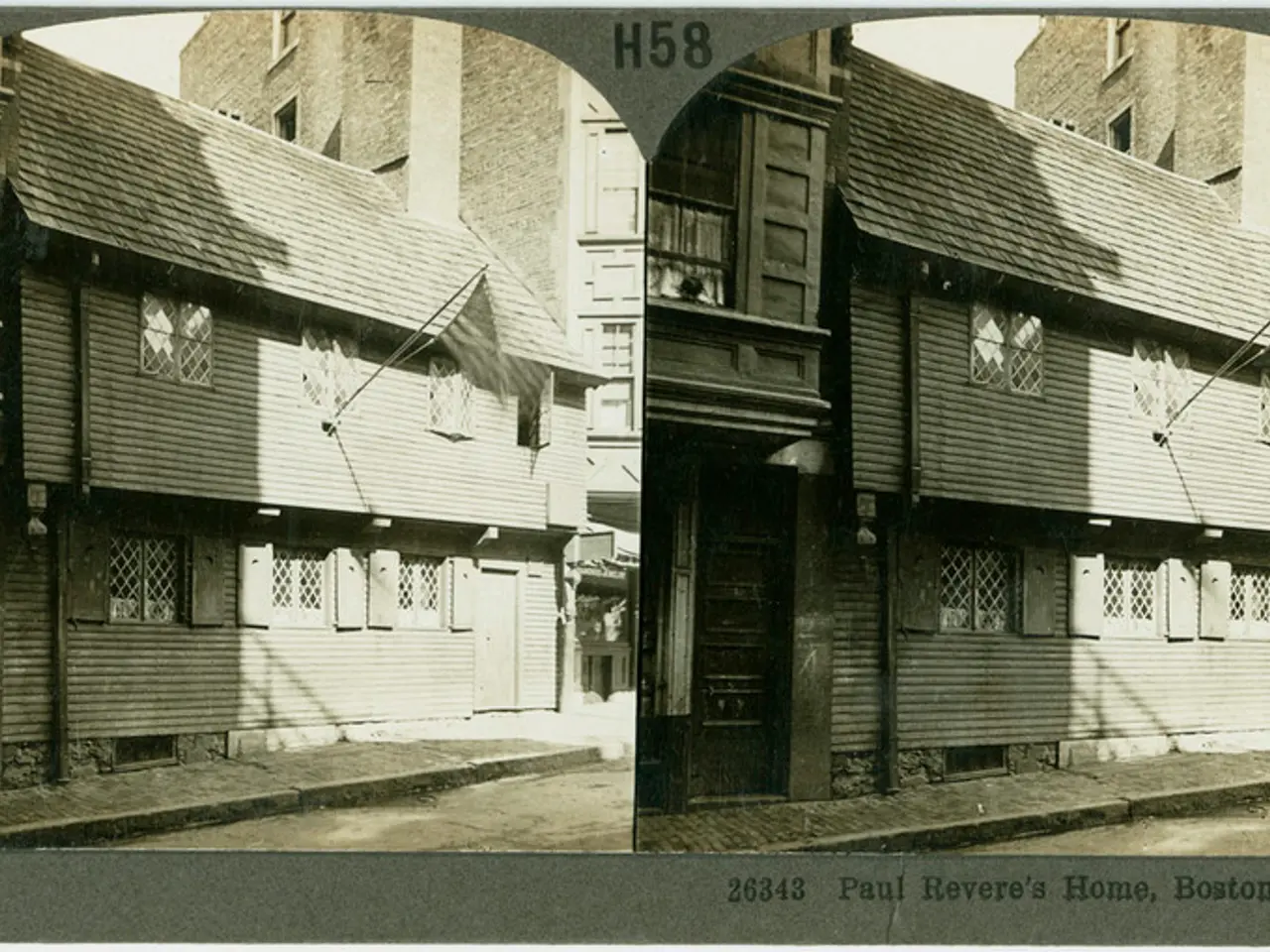History of the National Archives Building, located in Washington, D.C.
The National Archives Building, a grand structure located on Constitution Avenue in Washington, D.C., was constructed between 1931 and 1935. Designed by architect John Russell Pope in the Classical Revival style, the building was a monumental addition to the cityscape, with its giant Corinthian columns, 40-foot bronze doors, and intricate sculptures.
The groundbreaking ceremony took place on September 5, 1931, and President Herbert Hoover laid the cornerstone in February 1933. The building was initially planned to be located between 12th and 13th Streets and B Street (now Constitution Avenue) and C Street NW, but it was later moved to 9th and 10th Streets and Pennsylvania Avenue NW. The Center Market, which had approximately 700 vendors, was demolished in 1931 to make way for the National Archives Building.
The pediments on the north and south sides of the building are the largest in Washington, D.C., measuring 118 feet wide and 18 feet high at their peaks. Each of the 72 Corinthian columns is 53 feet high, 5 feet 8 inches in diameter, and weighs 95 tons. The two bronze doors that guard the Constitution Avenue entrance each weigh 6.5 tons and measure 38 feet 7 inches high, nearly 10 feet wide, and 11 inches thick.
Four large allegorical sculptures are located on pedestals near the entrances of the building. At the Pennsylvania Avenue entrance, the sculptures represent the Future and the Past; on the Constitution Avenue side, the sculptures represent Heritage and Guardianship. The medallions surrounding the building depict the Great Seal of the United States and emblems of the House of Representatives, Senate, and departments of government that existed at that time—symbols of the records that are housed in the building.
The Public Buildings Act of 1926 authorized the construction of the National Archives Building. Andrew Mellon, the Secretary of the Treasury, appointed a group of leading architects to design the federal buildings, including the National Archives Building. The building was designed to be a monumental structure with highly decorative architectural features, reflecting the careful planning and classical architectural approach consistent with Washington, D.C.’s overall cityscape design.
In 1952, after years of negotiation, the Constitution and the Declaration of Independence were transferred to the National Archives. Together with the Bill of Rights, which had been transferred to the Archives in 1938, the National Archives refers to these three documents collectively as the "Charters of Freedom." Three inscriptions encircle the building: the west side reads "The glory and romance of our history are here preserved in the chronicles of those who conceived and builded [sic] the structure of our nation."; the east side reads "This building holds in trust the records of our national life and symbolizes our faith in the permanency of our national institutions."; the south side reads "The ties that bind the lives of our people in one indissoluble union are perpetuated in the our website of our government and to their custody this building is dedicated."
The National Archives Building serves as the main office for the National Archives and Records Administration and is situated prominently on Constitution Avenue, near the National Mall. It was added to the National Register of Historic Places in 1971 and designated a National Historic Landmark in December 2023. This historic landmark stands as a testament to the nation's history and the importance of preserving government records for future generations.
[1] National Archives and Records Administration. (n.d.). The National Archives Building. Retrieved from https://www.archives.gov/about/archives/building
[3] National Archives and Records Administration. (n.d.). Charters of Freedom. Retrieved from https://www.archives.gov/founding-docs/charters
[5] National Park Service. (n.d.). National Register of Historic Places Registration Form: National Archives Building. Retrieved from https://npgallery.nps.gov/GetAsset/2b50a087-59e1-4759-914a-51b8d848c126
At the National Archives and Records Administration, education-and-self-development opportunities are vast, with opportunities to learn about the Charters of Freedom, such as the Constitution and the Declaration of Independence. The intricately designed National Archives Building, located on Constitution Avenue, is a testament to learning and self-improvement, showcasing the importance of preserving government records for future generations.




